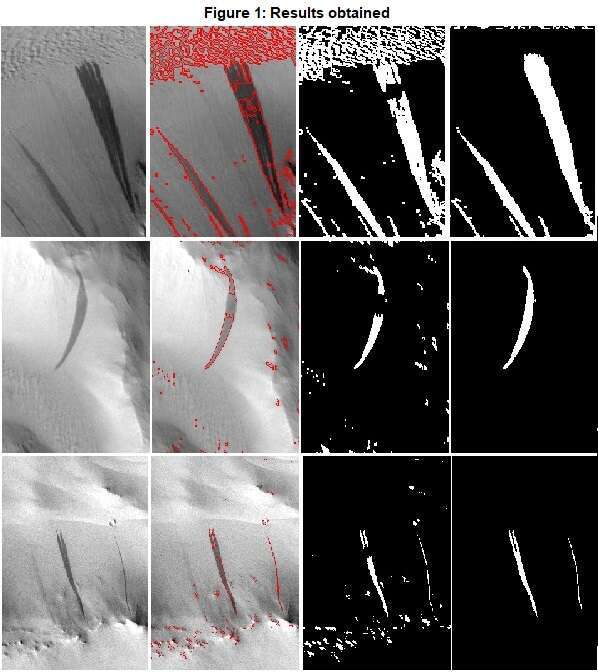
application of inpainting technique for reconstruction of partially detected features derived from the algorithm of automatic extraction of dark slope streaks
This paper approches the implementation of an algorithm that automatically detects features of interest on the martian surface, also known as Dark Slope Streaks (DSS). The greatest difficulty in the development of this kind of algorithm is false positives caused by shadows, depressions or fading of DSS, after a period of time. To avoid these problems, techniques such as thresholding, image segmentation, binarization and custom filtering routines were used to develop an extraction algorithm. Unfortunately, the extraction algorithm obtains partially detected features, culminating in loss of quality. Thus, in order to remove occlusions and restore lost features, it was decided to use an inpainting technique proposed by Liang-Jian Deng et al. For analysis, a reference image was created manually and compared with both the image obtained from the extraction process and the resulting image of the inpainting algorithm. This process was repeated for three areas of interest. Comparing the mean of SSIM pre-reconstruction and the mean of SSIM post-reconstruction, the inpainting algorithm shows an improvement of 15.85% in final quality. Therefore, both algorithms may contribute greatly to the increasing quality of extraction of DSS in the area of cartography.



Powered by Eventact EMS